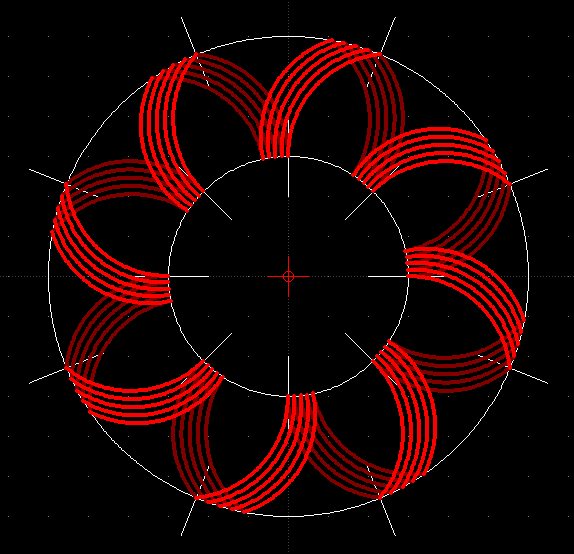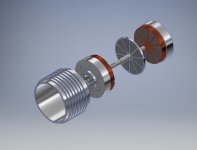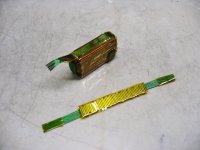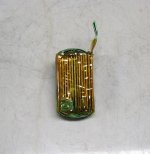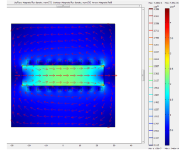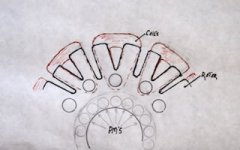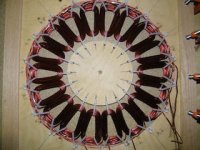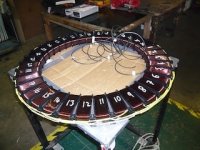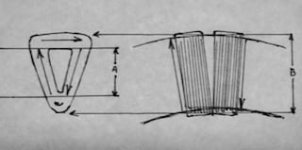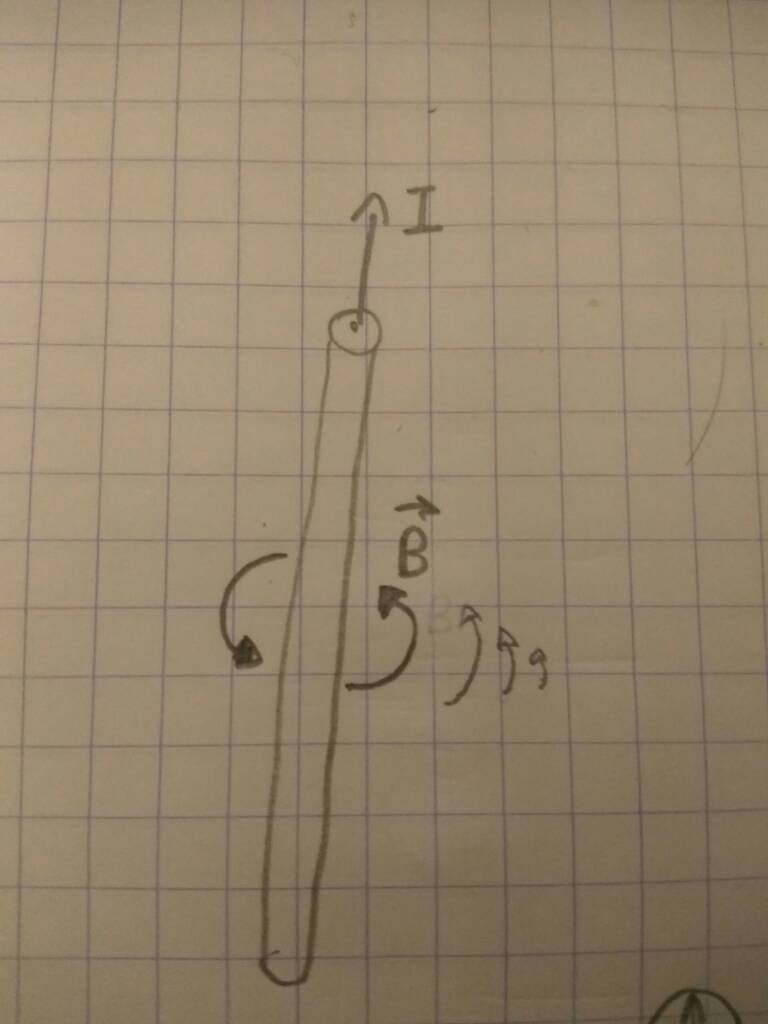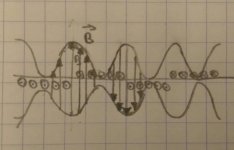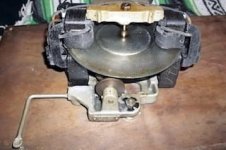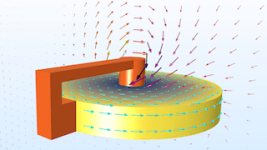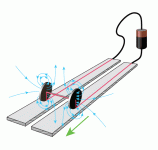Lebowski
10 MW
In a coreless motor the torque comes from the Lorentz force:
https://en.wikipedia.org/wiki/Lorentz_force
F = B * I * l
with B the magnetic field ( https://www.kjmagnetics.com/gap.calculator.asp ). For two round 25mm magnets, 7mm thick, grade N42, spaced 7 mm, no yoke, roughly 4000 gauss average. (or, 0.4 T, which is in he necessary SI units)
I, 50 windings per coil. Max force when magnets hovering over two neighbouring coils, so seeing 100 windings. At 20A -> I = 2000A
l, length, 25 mm magnets so lets say 0.02m average
-> F = 16 N (which is like 3 to 4 pounds in US units)
Then I got like 14 magnet pairs in V1, but all with varying degrees of pull (the 16N is peak). So lets say average pull is 8 N, times 14 so 110 N.
Then with magnet radius of lets say 0.07 m -> T = 7.8 Nm
At 1000 rpm this would be 780W mechanical power.
Another method to calculate would be to use magnetic field and rotor speed to calculate the derivative of magnetic flux. This then together with the 50 windings gives you generated voltage. Combined with current this gives you electrical power, which is the same as the delivered mechanical power. For losses, calculate your wire resistance (base on the length needed for 50 windings) and then use I^2*R
https://en.wikipedia.org/wiki/Lorentz_force
F = B * I * l
with B the magnetic field ( https://www.kjmagnetics.com/gap.calculator.asp ). For two round 25mm magnets, 7mm thick, grade N42, spaced 7 mm, no yoke, roughly 4000 gauss average. (or, 0.4 T, which is in he necessary SI units)
I, 50 windings per coil. Max force when magnets hovering over two neighbouring coils, so seeing 100 windings. At 20A -> I = 2000A
l, length, 25 mm magnets so lets say 0.02m average
-> F = 16 N (which is like 3 to 4 pounds in US units)
Then I got like 14 magnet pairs in V1, but all with varying degrees of pull (the 16N is peak). So lets say average pull is 8 N, times 14 so 110 N.
Then with magnet radius of lets say 0.07 m -> T = 7.8 Nm
At 1000 rpm this would be 780W mechanical power.
Another method to calculate would be to use magnetic field and rotor speed to calculate the derivative of magnetic flux. This then together with the 50 windings gives you generated voltage. Combined with current this gives you electrical power, which is the same as the delivered mechanical power. For losses, calculate your wire resistance (base on the length needed for 50 windings) and then use I^2*R



